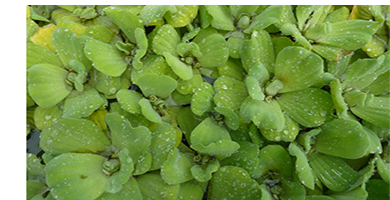
EPPO activities on Invasive Alien Plants
What is an invasive alien plant?
An invasive alien species is an alien species that by its establishment or spread has become injurious to plants, or that by risk analysis is shown to be potentially injurious to plants. For further explanation of definitions see the Appendix of ISPM 5 (IPPC, 2022) for the terminology of the Convention on Biological Diversity in relation to the glossary of phytosanitary terms.
Invasive alien plants can have wide ranging impacts and therefore these species are evaluated with the Prioritization Process in order to assess negative impact on agriculture, horticulture or forestry and additional impact e.g. on animal and human health, on infrastructures, recreational activities, or other trade related impacts such as market losses.

A brief history

EPPO protects plants in agriculture, forestry and the uncultivated environment. For over 70 years, EPPO has sought to prevent the introduction and spread of organisms which are harmful to plants in the European and Mediterranean region. Traditionally, EPPO has given priority to pests of cultivated plants (e.g. insects, nematodes, fungi, bacteria, viruses), that are not widely distributed in the EPPO region and for which technically justified phytosanitary measures to mitigate these risks can be proposed. But as new emphasis was given to the protection of biodiversity, it was acknowledged that plant protection also applied to plants in the uncultivated environment. Wild plants can be threatened by the introduction and spread of pests, and notably by 'invasive alien plants' which can seriously disturb and destroy natural plant communities. Therefore in the early 2000s, EPPO started to work more specifically on invasive alien plants and a specific Panel on Invasive Alien Plants was created in 2002.
Aims of the work
The aim of this work was to analyse the risks presented by specific invasive alien plant species for the EPPO region and recommend measures to prevent their introduction and spread via international trade. As a result, Lists of Invasive Alien Plants have been established on the basis of transparent criteria and harmonized methodologies (Prioritization Process and Pest Risk Analysis). These lists are updated on a regular basis to address the emergence of new risks. Additionally, recommendations and Standards are developed to facilitate EPPO member countries to manage unwanted populations of these invasive alien plants on their territory.
The Panel meets annually. Its current composition and summaries of its meeting discussions can be viewed on this website.
EPPO Lists of Invasive Alien Plants
One of the main output of EPPO’s work is the establishment of lists of invasive alien plants that may present a risk for the EPPO region. To establish these lists, specific prioritization processes and internationally agreed procedures to assess and mitigate the risks (Pest Risk Analysis) are followed. Datasheets for all assessed species are provided in the EPPO Global Database.
Prioritization Process and Pest Risk Analysis
The number of plants that can be considered as potentially invasive and damaging for the EPPO region is huge and there is a need to determine priorities. To align with EPPO’s strategy on quarantine pests, the Panel agreed that EPPO’s recommendations should be focused on species which are not widely distributed or absent from the region and for which efficient prevention, eradication or containment action can be undertaken. As a result, a process to prioritise invasive alien plants was developed. This was subsequently adopted as a Standard in 2012 (PM 5/6 EPPO prioritization process for invasive alien plants).
Once priorities are established, the potential risk presented by specific plant species or pathways (e.g. imports of aquatic plants) can be assessed in detail by conducted a Pest Risk Analysis (PRA). Within EPPO, Expert Working Groups (EWGs) are conducted to perform PRAs on specific plant species and the Panel on Invasive Alien Plants has been given the task of reviewing these PRAs.
Read a detailed evaluation on the EPPO Prioritization Process and how species are added or removed from the lists.
Finally, in the framework of an EU-funded project (LIFE project IAP-RISK), the EPPO prioritization process was also used and adapted to determine which invasive plant species had the highest priority for risk assessment at the EU level with the final aim of being eventually proposed for inclusion in the list of invasive alien species of EU concern.
EPPO prioritization process for invasive alien plants
EU LIFE prioritization process for invasive alien plants
EPPO Standards and other recommendations
EPPO Standards on Invasive Alien Plants
The following EPPO Standards have been developed specifically to address the issue of invasive alien plants. Once officially adopted by the EPPO Council, Standards are published in the the EPPO Bulletin and also stored in the EPPO Global Database.
| Number | Title |
| PM 3/74(1) | Guidelines on the development of a Code of conduct on horticulture and invasive alien plants |
| PM 5/6(1) | EPPO prioritization process for invasive alien plants |
| PM 6/5(1) | Host specificity testing of non-indigenous (classical) biological control agents used against invasive alien plants |
| PM 9/7(2) | Ambrosia artemisiifolia |
| PM 9/8(2) | Pontederia crassipes |
| PM 9/9(2) | Heracleum mantegazzianum, H. sosnowskyi and H. persicum |
| PM 9/12(1) | Sicyos angulatus |
| PM 9/19(1) | Invasive alien aquatic plants |
| PM 9/20(1) | Parthenium hysterophorus |
| PM 9/23(1) | Baccharis halimifolia |
| PM 9/24(1) | Microstegium vimineum |
| PM 9/29(1) | Ailanthus altissima |
| PM 9/30(1) | Ambrosia confertiflora |
| PM 9/31(1) | Ambrosia trifida |
Council declaration about plants for renewable energy and invasive alien plants
As several species included in the EPPO List of Invasive Alien Plants are sometimes planted as bioenergy crops, the EPPO Council made a special declaration in 2007 to warn its member countries about this potential risk.
Council declaration on plants for renewable energy and invasive alien plants
EPPO / Council of Europe Code of conduct on horticulture and invasive alien plants
 It is estimated that 80% of the invasive alien plants which are present in Europe have been voluntarily introduced for ornamental purposes, and international trade is increasing yearly. This major pathway must be addressed urgently to prevent entry and spread of invasive alien plants, as at present, few legislation and management programmes are in place. Voluntary measures to tackle the problem and raise awareness among the horticultural sector and the general public are therefore considered to be a priority. In 2008, EPPO and the Council of Europe (CoE) jointly drafted and published a Code of conduct on horticulture and invasive alien plants. In 2011, a new illustrated version of the EPPO/Council of Europe Code of conduct on horticulture and invasive alien plants was released in English and French (also available from the Council of Europe website). This Code of conduct provides essential information for Governments, as well as the horticultural and landscape sectors, on existing regulations concerning invasive alien plants, and it provides guidelines on plant waste disposal, labelling of plants, planting of alternative plant species, and publicity.
It is estimated that 80% of the invasive alien plants which are present in Europe have been voluntarily introduced for ornamental purposes, and international trade is increasing yearly. This major pathway must be addressed urgently to prevent entry and spread of invasive alien plants, as at present, few legislation and management programmes are in place. Voluntary measures to tackle the problem and raise awareness among the horticultural sector and the general public are therefore considered to be a priority. In 2008, EPPO and the Council of Europe (CoE) jointly drafted and published a Code of conduct on horticulture and invasive alien plants. In 2011, a new illustrated version of the EPPO/Council of Europe Code of conduct on horticulture and invasive alien plants was released in English and French (also available from the Council of Europe website). This Code of conduct provides essential information for Governments, as well as the horticultural and landscape sectors, on existing regulations concerning invasive alien plants, and it provides guidelines on plant waste disposal, labelling of plants, planting of alternative plant species, and publicity.
Code of conduct on horticulture and invasive alien plants (English version)
Code de conduite sur l'horticulture et les plantes exotiques envahissantes (version française)
Translations in other languages
- In Spanish, translated by the Ministry of Environment, Marine and Rural Affairs (pdf)
- In Italian, by the Ministry of the Environment and Protection of Land and Sea (pdf)
Information exchange and Communication
As for other pests, an important mission of EPPO is to promote information exchange on invasive alien plants, via its publications, databases and international conferences.
EPPO Reporting Service: since 2006, this free monthly newsletter prepared by the EPPO Secretariat includes a specific section on invasive alien plants.
The EPPO Global Database : a free database which contains for many invasive alien plants , geographical distributions, datasheets, PRAs and pictures.
EPPO Bulletin: many scientific articles on invasive alien plants have already been published in the EPPO Bulletin, more are welcome and can be submitted for publication.
EPPO -Q-Bank invasive plants & Q-bank invasive plants: free databases on diagnostics (sequence data, identification keys).
Workshops and Conferences: EPPO regularly organizes workshops and conferences to raise awareness and exchange information on invasive alien plants, either on specific plant species or more general issues.
![]() The EPPO Secretariat is looking for pictures of invasive alien plants, if you wish to contribute, picture files (jpg) can easily be uploaded onto the EPPO Global Database (see our PDF guide).
The EPPO Secretariat is looking for pictures of invasive alien plants, if you wish to contribute, picture files (jpg) can easily be uploaded onto the EPPO Global Database (see our PDF guide).
The EPPO Secretariat is also developping communication kits. The objective being to provide EPPO’s member countries with templates (posters and leaflets) that can be easily adapted to different types of specific information campaigns. A series of templates for posters and leaflets is available from this website for more than 10 invasive alien plant species.
View and download
EPPO posters and leaflets
on invasive alien plants
![]()
Useful publications on Invasive Alien Plants
- Tanner et al., (2017) The prioritization of a short list of alien plants for risk analysis within the framework of the Regulation (EU) No. 1143/2014. NeoBiota 35, 87-118.
- Branquart et al., (2016) A prioritization process for invasive alien plant species incorporating the requirements of the EU Regulation no. 1143/2014. Bulletin OEPP/EPPO Bulletin 46, 603-617.
- Brunel et al., (2010) The EPPO prioritization process for invasive alien plants. Bulletin OEPP/EPPO Bulletin 40, 407-422.
- Brunel S (2009) Pathway analysis: aquatic plants imported in 10 EPPO countries. Bulletin OEPP/EPPO Bulletin 39, 201–213.
- EPPO (2012) EPPO Standards - Guidelines for pest risk analysis. PM5/6(1) EPPO prioritization process for invasive alien plants. Bulletin OEPP/EPPO Bulletin 42, 463-474.
Contacts and partnerships
Mutual exchange of information and partnerships on activities related to invasive alien plants are being built with:
- the expert group on Invasive Alien Species of the Bern Convention of the Council of Europe
- the European Environment Agency
- the International Association of Horticultural Producers
- the Invasive Species Specialist Group
- the DAISIE and ALARM projects
- NOBANIS
